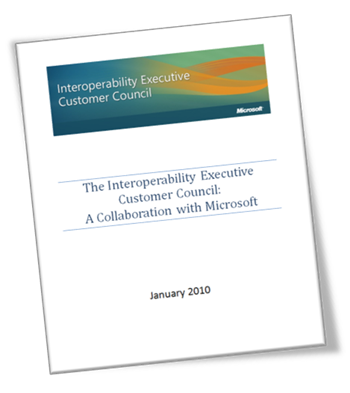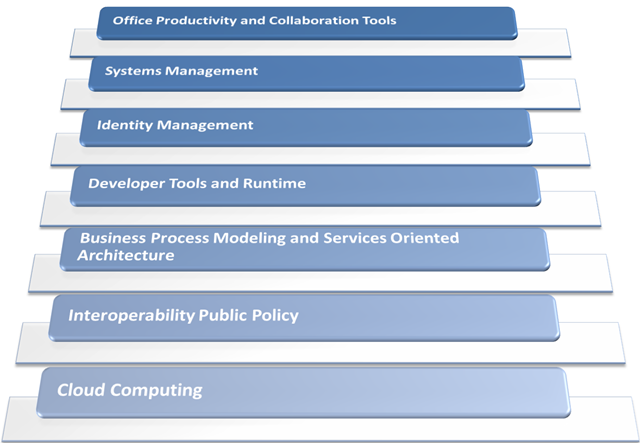Putting customer feedback into action to advance interoperability
 As the Interoperability Executive Customer (IEC) Council moved into its 4th year of existence and embarked on tackling interoperability issues in new areas, we just published a whitepaper(PDF 1.25Mb) listing the discussions and major achievements by the council over the last 3 years.
As the Interoperability Executive Customer (IEC) Council moved into its 4th year of existence and embarked on tackling interoperability issues in new areas, we just published a whitepaper(PDF 1.25Mb) listing the discussions and major achievements by the council over the last 3 years.
This is the first time we have gone public with any of the operational details and results achieved by the council.
As a technical lead, running the day to day workings of this council, I will also like to thank all the member organizations, their CIOs and other technical leads and architects for their support and participation in this council. I encourage you to read comments from Council members in the following article:
“ Microsoft and Customer Executives Team Up to Improve Interoperability ”.
These organizations spend a lot of time and effort in attending the meetings and providing us candid feedback on many of our strategies, products and technologies without which the council wouldn’t be able achieve what it has in these past 3 years. The council also sees a lot of engagements from many Microsoft product teams and other employees from various parts of the company but I would especially like to call out and thank Connie Dean, Meghan Raftery and Monty O’Kelley for their contributions over the last 3+ years.
The IEC Council is led by Bob Muglia, President of Server and Tools Business and his direct involvement is a major factor in its successful existence and ability to produce tangible results over the past 3 years. It plays a key role in influencing Microsoft’s overall strategy around interoperability and providing feedback on this important subject. As you will be able to readily recognize, many of the blog posts on this site and our work at www.interoperabilitybridges.com have been highly influenced by discussions taking place within the IEC Council. This is strictly by design.
All the information gathered from the IEC Council process has been categorized into areas of focus called “work streams”. Work stream efforts are led by executives from numerous Microsoft divisions and product teams who interact and partner with council members’ technical architects and CIOs to identify and develop solutions within these specific areas. These are:

We would love to hear some feedback on the topics discussed, results achieved and in general on interoperability issues being addressed through the workings of this council.
Looking forward to more productive discussions and positive results from the IEC Council for many more years.
Kamaljit Bath, Principal Program Manager